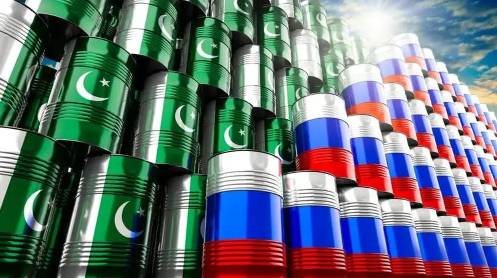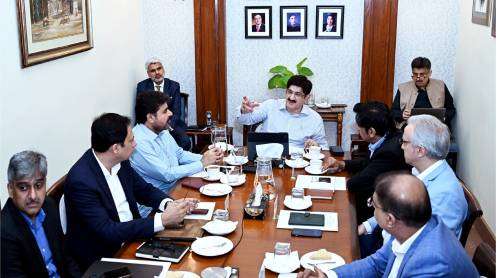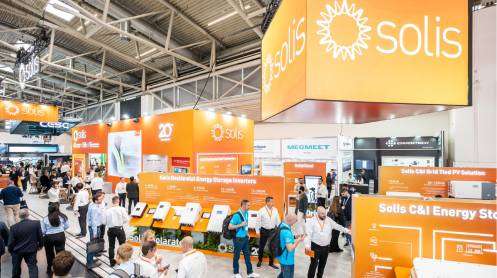ISLAMABAD: Pakistani’s maximum benefit on Russian crude would stand at $7-8 million/100,000 tonnes compared to Middle Eastern oil, translating to Rs1.30/litre discount on petrol for consumers, an Energy Ministry official told The News.
The discount could further increase to Rs1.60/litre petrol for the end consumers, in case National Refinery Limited, Pakistan Refinery Limited, and PARCO refined URAL, the official added.
“The ultimate benefit for end consumers is too low against the government’s high hopes from the heavy Russian crude, which is being refined by the decades old Pakistan Refinery Limited,” he said. “However, if Pakistan had a state-of-the-art deep conversion refinery, it would have maximised the benefits of URAL with maximum production and zero furnace oil output.”
The official said that if the Platts report was kept in view, Russian crude oil DAP (Delivered at Port) price in India stood at $65.7/barrel against Brent crude DAP price at $80/barrel.
However, in the international market, URAL price is at $57/barrel and Brent crude is at $75/barrel. As per the fluctuations in Brent crude price, URAL price also varies accordingly.
India is importing discounted URAL in bulk and refining it in its deep conversion refineries, making maximum finished products with zero furnace oil output and exporting them to Europe and making windfall profit.
In the case of Pakistan, the DAP price of URAL is estimated at $70/barrel including the shipping cost of $12-13/barrel from Russia to Pakistan against the DAP price of light crude from Saudi Aramco and ADNOC which is also at $80/barrel. This is how the URAL’s arrival price is $10/barrel below the price of crude from the Middle East, which Pakistani refineries use for finished products, a senior official stated while quoting the Platt prices about Russian crude in India.
Russia is not extending the special discount to Pakistan rather it is extending the same discount that other countries are getting. “The price relief per litre is too little, which if not passed on to the end consumers, but even then Pakistan’s economy will get the benefit of $7-8 million/cargo.”
Pakistan’s refineries use 80 percent light crude from Saudi Aramco and ADNOC under long-term contracts and consume 20 percent crude by purchasing from the spot market. Now it is up to the government how it mixes the Russian crude. The official said that the government has not yet received the PRL report about yields and how commercially viable Russian crude is. “However, there are indications that PRL can save $7.3 to 8 million per cargo of 100,000 tonnes of URAL crude.”
The official said that the discount from Russia will continue to vary every month keeping in view the Brent price fluctuations in the international market.
“If local refineries are allowed to upgrade in the next 4 years, the benefit from URAL can rise threefold,” the official stressed, reminding that the policy for local refineries was still pending after two-and-half years.
He said that PRL was blending 45 percent URAL, 45 percent crude from the Middle East, and 10 percent local crude. From URAL, PRL has produced 10 percent petrol, 60 percent furnace oil, 10-15 percent high-speed diesel, and 15 percent other items.
PRL is too old as it was incorporated in Pakistan as a Public Limited Company in May 1960. It is a hydro-skimming refinery designed to process various imported and local crude oils to meet the strategic and domestic fuel requirements of the country. The refinery has a capacity of processing approximately 50,000 barrels per day of crude oil into a variety of distilled petroleum products such as motor gasoline, high speed diesel, furnace oil, jet fuels, kerosene oil, and naphtha. urnace oil produced from URAL has high viscosity at 700cSt, and PRL has to mix 10 percent diesel in it to decrease its viscosity to 180cSt so that it can flow. This was how furnace oil production escalates to 60 percent, and diesel production is slashed by 10 percent, the official informed.
Thus, net diesel production will stand at 10-15 percent out of URAL. This means that out of 100,000 tonnes of URAL, the decades-old PRL will have to export 60 percent URAL crude in the shape of furnace oil at 75 percent of crude with a 25 percent loss. Since the discount is reasonable, even then using URAL is beneficial for Pakistan’s economy.
The official said that if Pakistan wanted to maximise the benefits of discounted Russian oil, it has to immediately announce the much-awaited refining policy for local refineries so they can upgrade in the next four years. As far as the new refinery is concerned, it will be established in the next 7-8 years if Saudi Aramco starts working on it right away, the official added.







